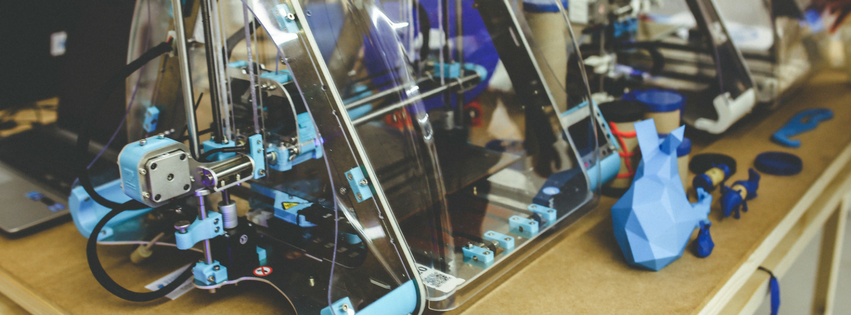 This article was originally posted on Joshua Wilson’s blog. You can find more about him here.
This article was originally posted on Joshua Wilson’s blog. You can find more about him here.
Over the last few years, maker technologies, in which I include 3D printing and scanning, virtual and augmented reality, and robotics, have made some of the biggest waves in higher education. The rapid expansion of the academic maker space’s mission has been matched only by the rising sophistication of maker technologies. Not so long ago, maker spaces largely served the prototyping needs of student innovators. Now, the very best college and university maker spaces are found in expansive facilities where faculty, students, and staff come together to explore an incredibly wide variety of ideas, hypotheses, and designs while pursuing social justice, entrepreneurship, and the joy of discovery.
The ethos of the MakerLab is collaborative: cutting-edge technologies augment learning across the sciences, social sciences, humanities, and arts.
From 2014 through 2016, I led the creation of the Brandeis University MakerLab, winner of prestigious awards at World MakerFaire in 2015 and 2016. The MakerLab, still overseen by founding head Ian Roy, empowers the Brandeis University community to pursue innovative scholarship and make the world a better place. Between Fall 2014 and Fall 2016, the Brandeis maker community grew from just 100 students to more than 1,200 students, faculty and staff. This community includes 1,000 undergraduates and graduate students (roughly 20% of the student body). The ethos of the MakerLab is collaborative: cutting-edge technologies augment learning across the sciences, social sciences, humanities, and arts. Cross-pollination of ideas across disciplines creates happy accidents that advance the state of technology.
As I found at Brandeis, maker spaces are most transformative when they help teaching become more compelling, learning more immersive, research more innovative, and the student experience more vibrant. Here are some examples that demonstrate the impact of a maker space.
Compelling Teaching
In a large biochemistry course, maker technologies enabled a novel flipped classroom experience. Each student developed great expertise in a specific molecule, 3D-printed the molecule using data from a publicly available scientific database and a technique created by a talented Brandeis undergraduate, and then taught fellow students about the molecule.
Immersive Learning
In a classics course focused on Roman architecture, undergraduates used virtual reality technologies to create captivating, highly detailed, historically accurate environments in which fellow students could experience long-destroyed Roman buildings. Student virtual reality developers acquired great knowledge about the buildings they re-created as well as developing exceptional, marketable skills with this exciting technology.
Innovative Research
MakerLab staff traveled with an anthropology research team to the Greek island of Crete to study artifacts from a long-sealed ancient warrior tomb. Cutting-edge 3D scanning technology enabled the gathering of an extensive data set with which researchers could identify fingerprints, marks, cracks, and other characteristics of each object that would not be apparent to the naked eye.
Vibrant Student Experience
The MakerLab brings students together across the academic disciplines, creating interpersonal interactions that wouldn’t have otherwise taken place. In one recent example, a physics student was developing a prototype of a new lens mount. When his 3D print was complete, he was approached by a classics student who was working on a separate project. The classics student informed the physics student that the prototype, while functional, wasn’t aesthetically pleasing. The two then collaborated on further iterations to the lens mount that improved both its function and its form.
Maker spaces are far more than 3D printing centers. They can be innovative and collaborative intellectual centers that create and nurture a community of explorers. They are the metaphorical hearts of innovation hubs for the entire university community, where faculty, students, and staff come together to generate new ideas, give them shape and form, and push the boundaries of discovery.
Avoid costly mistakes and wasted time – talk to an impartial peer in Higher Ed!
There is nothing like speaking with a peer who has implemented the same product – send us a request.
You can also provide general feedback, inquire about additional free resources, submit a topic you’d like us to cover, tell us about a feature you’d like to see, or request the best staff for your project.